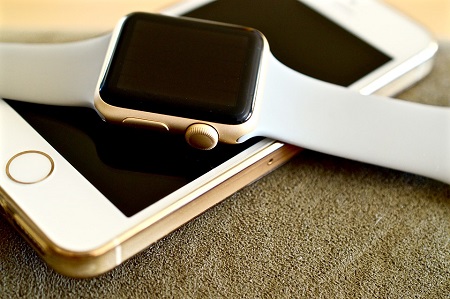Health and activity trackers have easily led the fitness tech category and this is expected to continue next year.
The American College of Sports Medicine (ACSM) has released its fitness trend forecast for 2017 and has placed wearable technology devices at the top. Consumers are owning and using these devices to a rapidly growing degree, says the “Worldwide Survey of Fitness Trends for 2017.”
The report was published in the Health & Fitness Journal from the American College of Sports Medicine.
These wearable technology devices are making it possible for people to track their steps, activity intensity, calories burned and other fitness metrics. FACSM survey lead author and College of Education & Human Development dean at Georgia State University in Atlanta, Walter R. Thompson, PhD, explained “The health data collected by wearable technology can be used to inform the user about their current fitness level and help them make healthier lifestyle choices.”
The survey has placed wearable technology devices at the top of its eleventh annual survey results.
 The survey involves the participation of over 1,800 health and fitness professionals from around the world. Many of those pros are ACSM certified. It is used to provide insight within a spectrum of fitness fields. The participants in the survey were allowed to choose from 42 possible fitness trends. Among the results, the top 20 were ranked and shared within the ACSM outcomes publication.
The survey involves the participation of over 1,800 health and fitness professionals from around the world. Many of those pros are ACSM certified. It is used to provide insight within a spectrum of fitness fields. The participants in the survey were allowed to choose from 42 possible fitness trends. Among the results, the top 20 were ranked and shared within the ACSM outcomes publication.
Among the leading trends from that top 20 list are the following:
1. Wearable tech – this trend included smartwatches, fitness and health trackers, GPS tracking devices and heart rate monitors.
2. Body Weight Training – this is a technique that is considered highly effective and affordable as it requires very little equipment.
3. High-Intensity Interval Training (HIIT) – this involves peppering a workout with intense, brief explosions of physical activity followed by a moment of recovery before returning to the intensity again.
4. Fitness Professionals with Education and Experience – a greater focus is being placed on certification, education and experience in fitness among experts than simply seeking big promises or having some kind of celebrity.
5. Strength training – cardio may be the top calorie burner, but strength training is gaining emphasis for its metabolism boosting and spectrum of additional health and fitness benefits.
Still, among all these broad and widespread trends, wearable technology devices clearly lead the way among consumers and pros alike.
These wearable technology gadgets are highly popular but may also be used for legal purposes.
Consumers who purchase and use fitness trackers for the purposes of monitoring their health and activity levels may be surprised to discover that those same devices could actually be used against them in a court of law.
This type of wearable technology can monitor a lot about a person, providing useful legal evidence.
Various types of fitness trackers have been flying off the shelves, from Fitbits to Jawbones and smartwatches. They are used to track your steps and calorie burning, as well as your heart rate and sleep, in some cases. However, in a court of law, this can also provide a considerable amount of information to help to determine what the wearer was doing at the time of an incident. According to Bruce Hagen, an attorney from Atlanta whose firm has a specialty in bicycle accident cases, “This is the same as the black box data you would get on a car or a truck or an airplane.” Hagen has been requesting fitness data from his clients for a year.
The fitness trackers help to show how active a person was before an incident occurred.
 While the wearable technology was being used to track the wearer’s activity, it can actually provide a record of that individual’s life. Some situations allow the data to be used to reveal how active a person had been, on average, before an accident, and how that trend changed following a crash. This type of data can help to provide evidence with regards to a person’s honesty about the impact an accident has had on their lives or “it can also catch them in a lie if it comes to that,” explained Hagen.
While the wearable technology was being used to track the wearer’s activity, it can actually provide a record of that individual’s life. Some situations allow the data to be used to reveal how active a person had been, on average, before an accident, and how that trend changed following a crash. This type of data can help to provide evidence with regards to a person’s honesty about the impact an accident has had on their lives or “it can also catch them in a lie if it comes to that,” explained Hagen.
The first time this type of evidence from wearables was ever used was from a case in rural Pennsylvania. As it turned out, the law enforcement officers from the case were the ones who thought of accessing the data from the wearable technology.
The case involved a 911 call in which a Florida woman reported a sexual assault by an unknown intruder while she had been staying at her boss’s home. For a number of reasons, Detective Chris Jones started to doubt the woman’s case as he conducted his investigation. He then realized that she had a Fitbit, and he requested her login and password in order to access the information stored within her tracking account.
The fitness tracker data showed that the wearer had taken around 1,000 steps between the time she claimed to have gone to bed and the time and phoning the police. This evidence held up in court, revealing that she had been taking the steps as she staged the crime scene.
 The survey involves the participation of over 1,800 health and fitness professionals from around the world. Many of those pros are ACSM certified. It is used to provide insight within a spectrum of fitness fields. The participants in the survey were allowed to choose from 42 possible fitness trends. Among the results, the top 20 were ranked and shared within the ACSM outcomes publication.
The survey involves the participation of over 1,800 health and fitness professionals from around the world. Many of those pros are ACSM certified. It is used to provide insight within a spectrum of fitness fields. The participants in the survey were allowed to choose from 42 possible fitness trends. Among the results, the top 20 were ranked and shared within the ACSM outcomes publication.
